Background
Imagine a world where families feel empowered to prepare for emergencies, not simply react to them. This is the vision behind Huddle, an innovative mobile app designed to bridge the gap between complex emergency preparedness resources and everyday users.
In the wake of the 2023 Maui wildfires, the Lahaina and upcountry Maui communities faced unexpected chaos and devastation. My close proximity to the disaster ignited a resolve to create a digital solution that assists families in preparing for emergency situations.
Responsibilities
User research, Wire-framing, Branding, Prototyping, Usability testing
Role
UX/UI Designer, UX Researcher
Design Tool
Figma, Adobe Illustrator
Timeline
80 Hours, 4 Weeks
2023 Lahaina, Maui (Left) and Kula, Maui (Right) Maui wildfire aftermath
Sources: Lahaina Image, Kula Image
Navigating family emergency planning
"Many are unprepared for the sudden and severe nature of disasters."
Initial research highlights a concerning issue: according to the CDC, only 39% of Americans have created and discussed an emergency plan with their family, and FEMA's findings show that less than half of households are prepared for emergencies. This data underscores a critical truth – many are unprepared for the sudden and severe nature of disasters. These preliminary findings steered my focus towards a deeper exploration of emergency preparedness.
Sources:
DEFINING RESEARCH GOALS
🎯 Understanding User Needs and Concerns:
Investigate how users prepare for emergencies, their emotional responses, and decision-making during crises.
🎯 Resource Management and Family Dynamics:
Examine emergency resource accessibility and understand family roles and interactions in emergency situations.
🎯 Evaluating Trust and Usability of Technology:
Assess user trust in emergency solutions and analyze technology use, focusing on ease of use and digital literacy.
EXPLORING THE EMERGENCY & DISASTER RESPONSE LANDSCAPE
📈 Large Market:
The Emergency and Disaster Response Market size is estimated at USD 166.73 billion in 2024, and is expected to reach USD 229.30 billion by 2029, growing at a CAGR of 6.58% during the forecast period (2024-2029).
💻 Technology Driven:
The emergency preparedness market is evolving rapidly, heavily influenced by technological innovations that enhance efficiency in disaster management, from early warning systems to real-time data analysis and communication technologies.
🏢 Corporate Domination:
The emergency preparedness market is dominated by companies like IBM, Honeywell, Motorola Solutions, and Lockheed Martin, mainly serving governments, large organizations, and sectors like healthcare and defense. Their focus is on emergency management, communication technology, and cybersecurity.
Source:
MAIN INDUSTRY PLAYERS
American Red Cross:
Offers targeted information and alerts for different types of emergencies, including natural disasters and first aid. However, its broad, generalized approach limits the app's effectiveness in addressing the unique preparedness needs of individual users or certain communities.
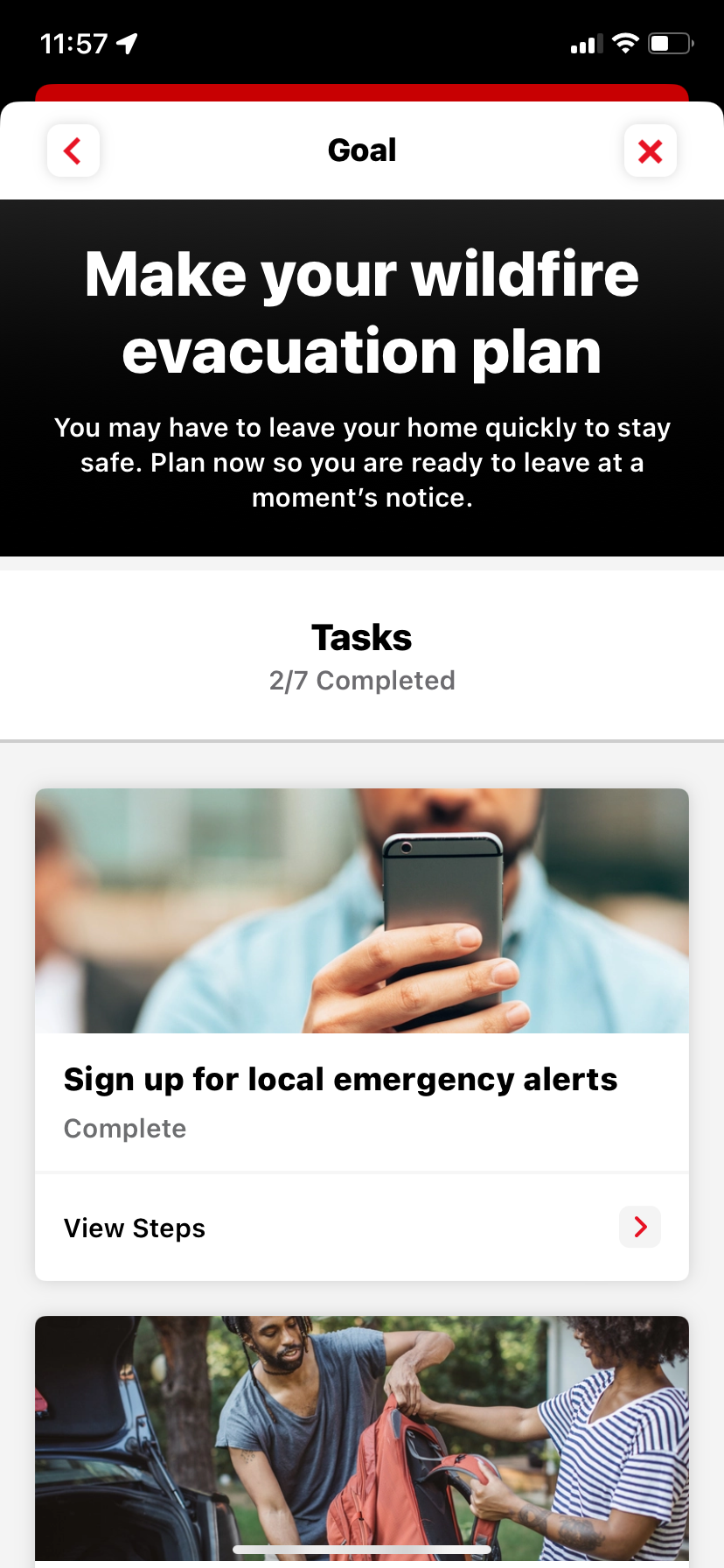

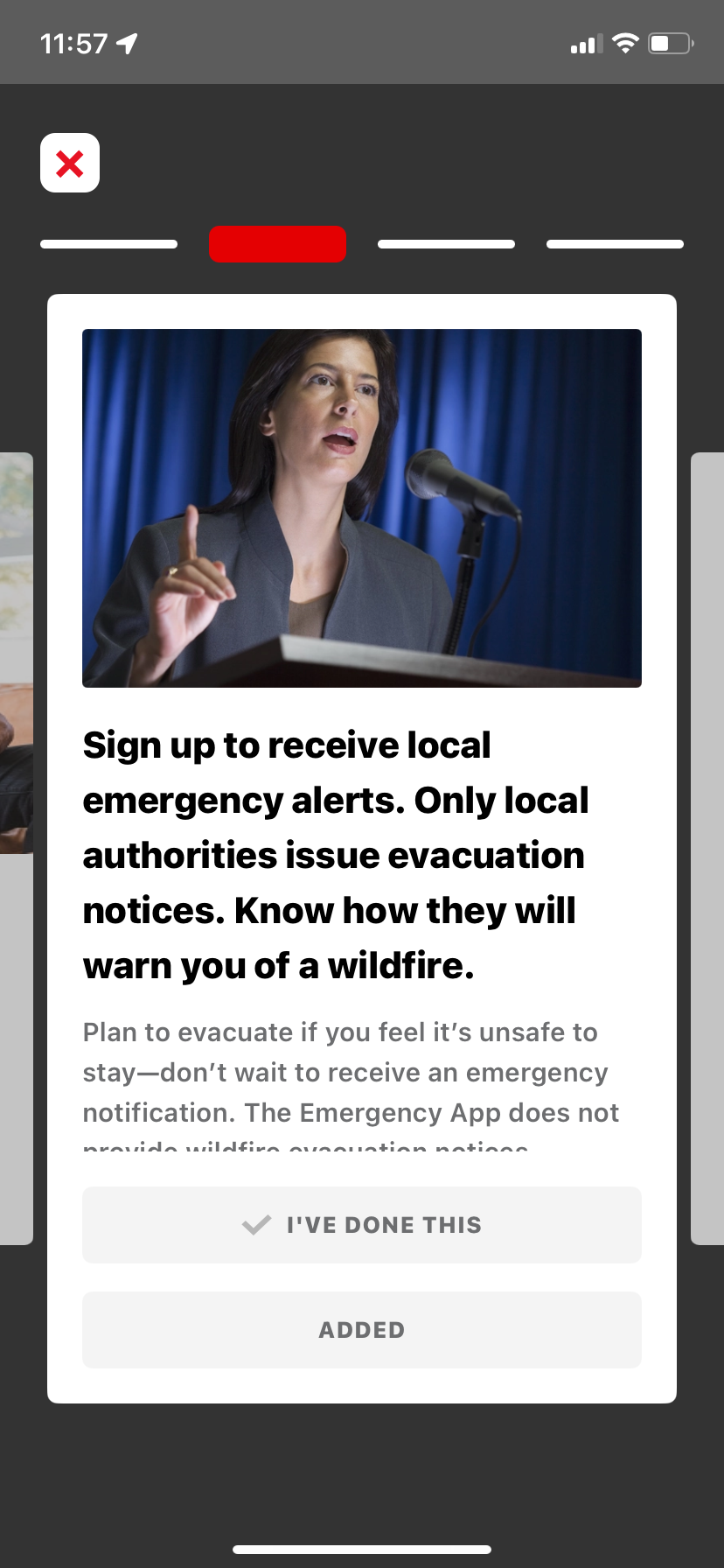
FEMA:
Provides comprehensive emergency information, which can be overwhelming. Users may find it challenging to sift through the extensive content to find what is immediately relevant to their specific emergency situation.
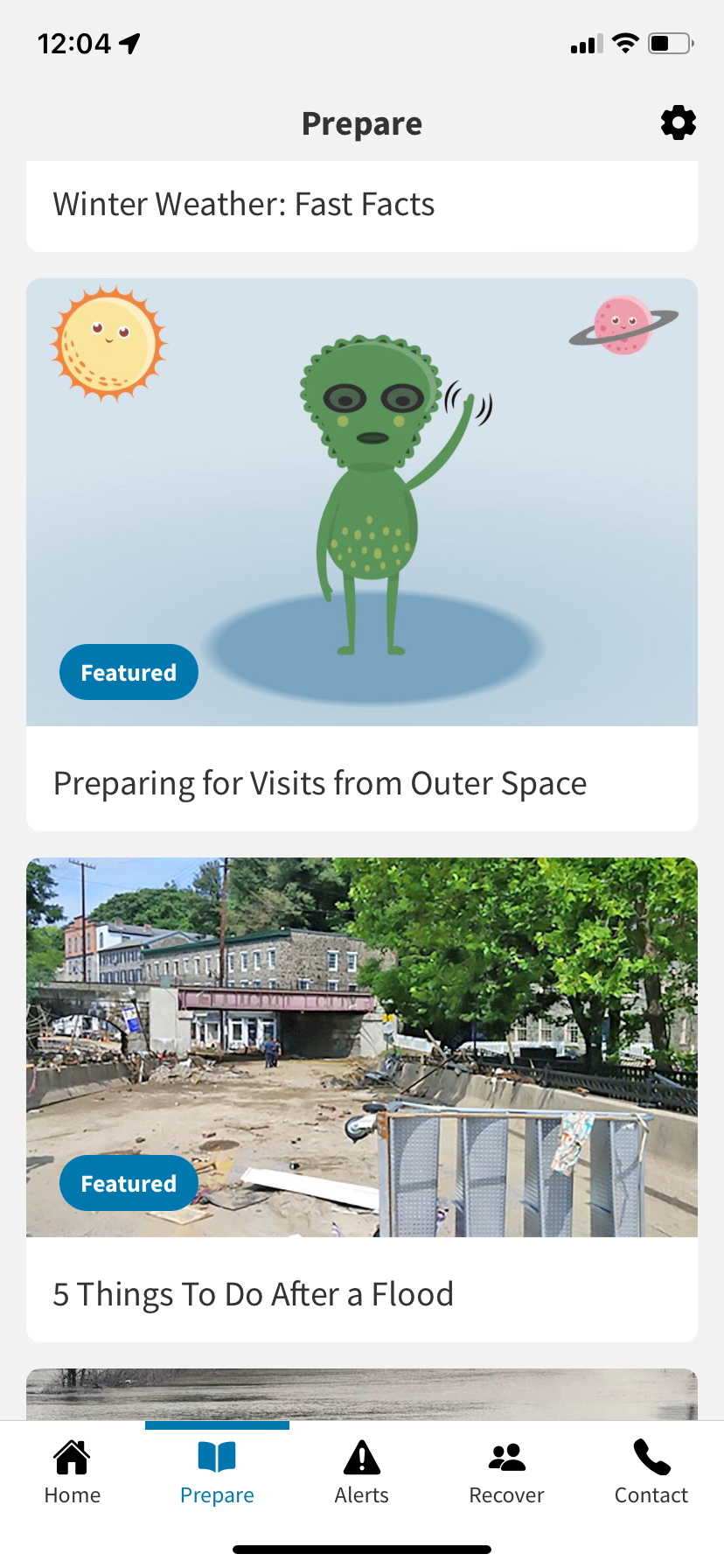
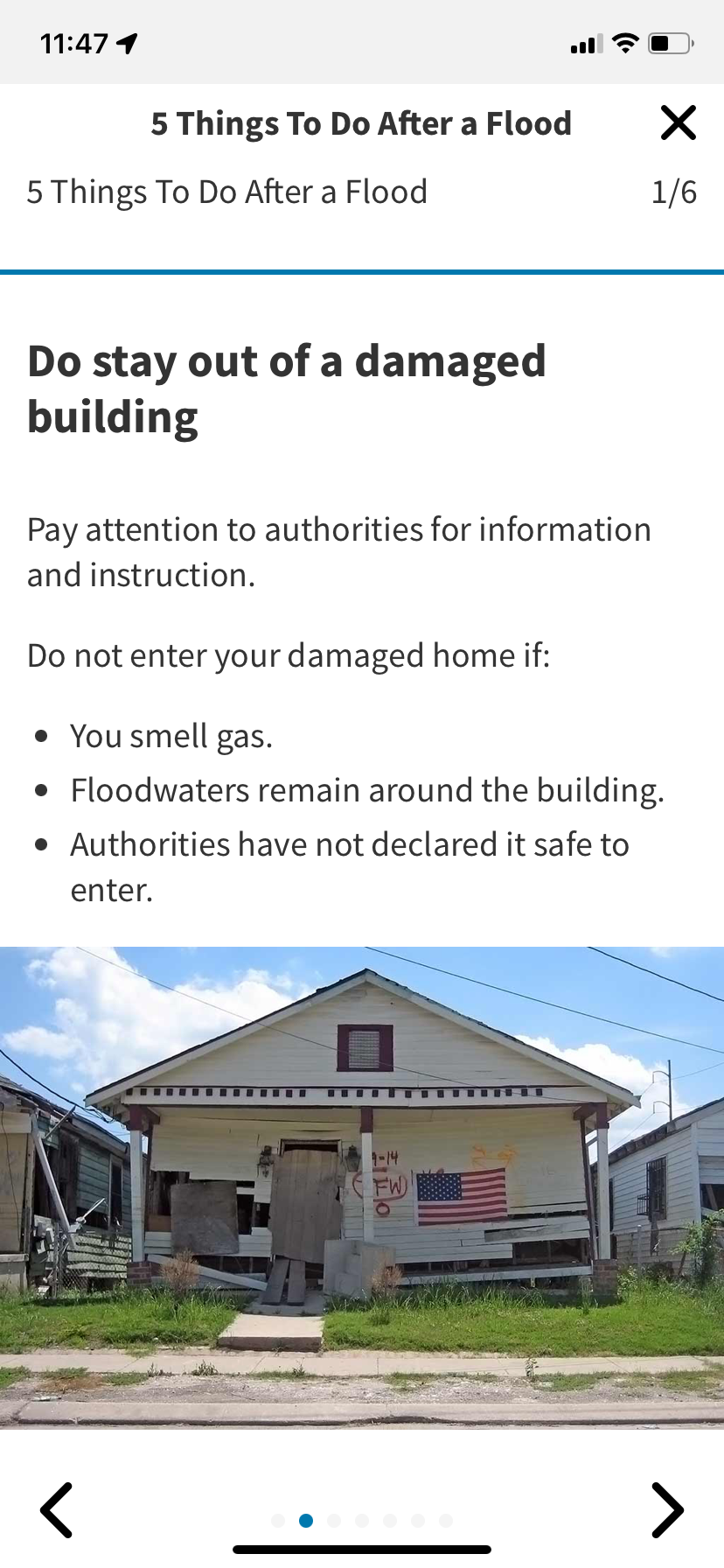
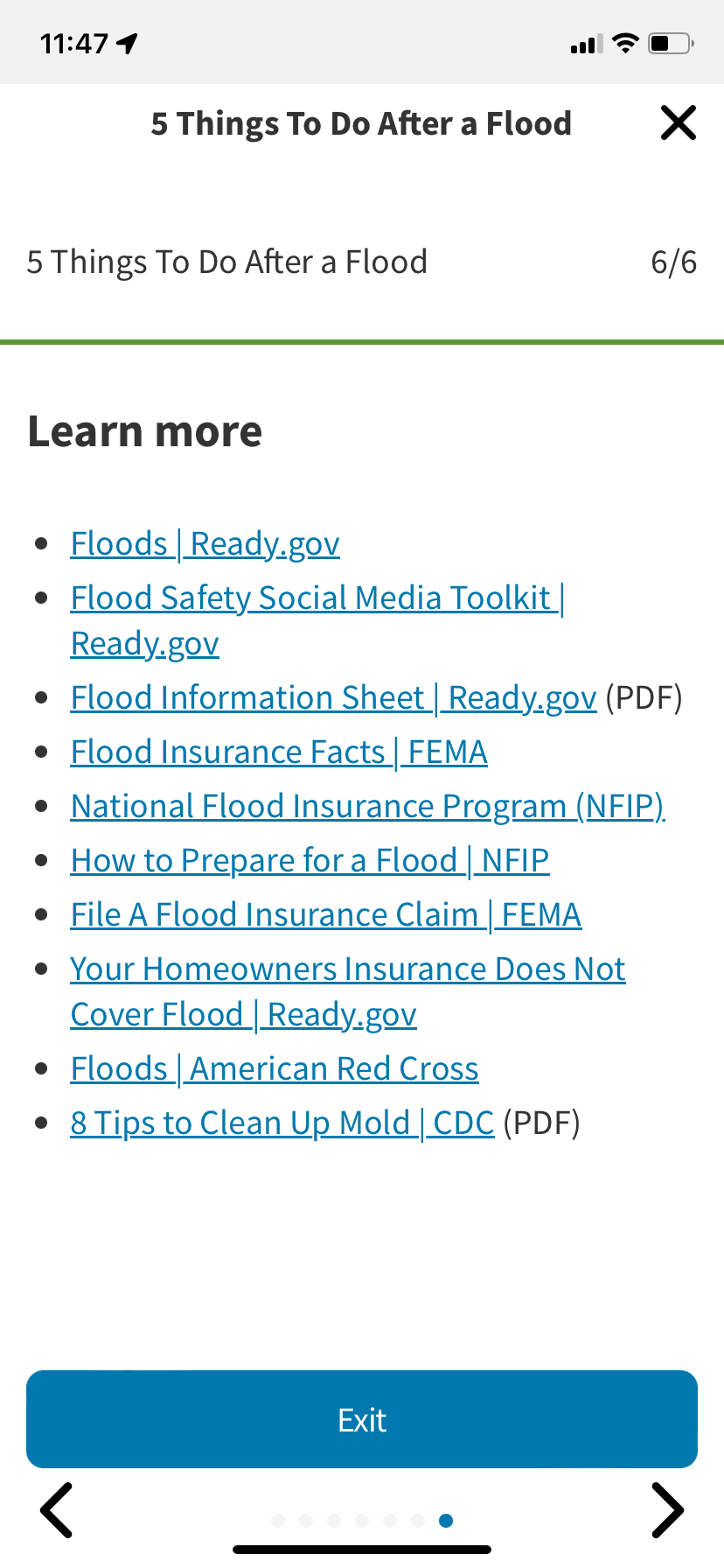
ALTERNATIVE PLAYERS
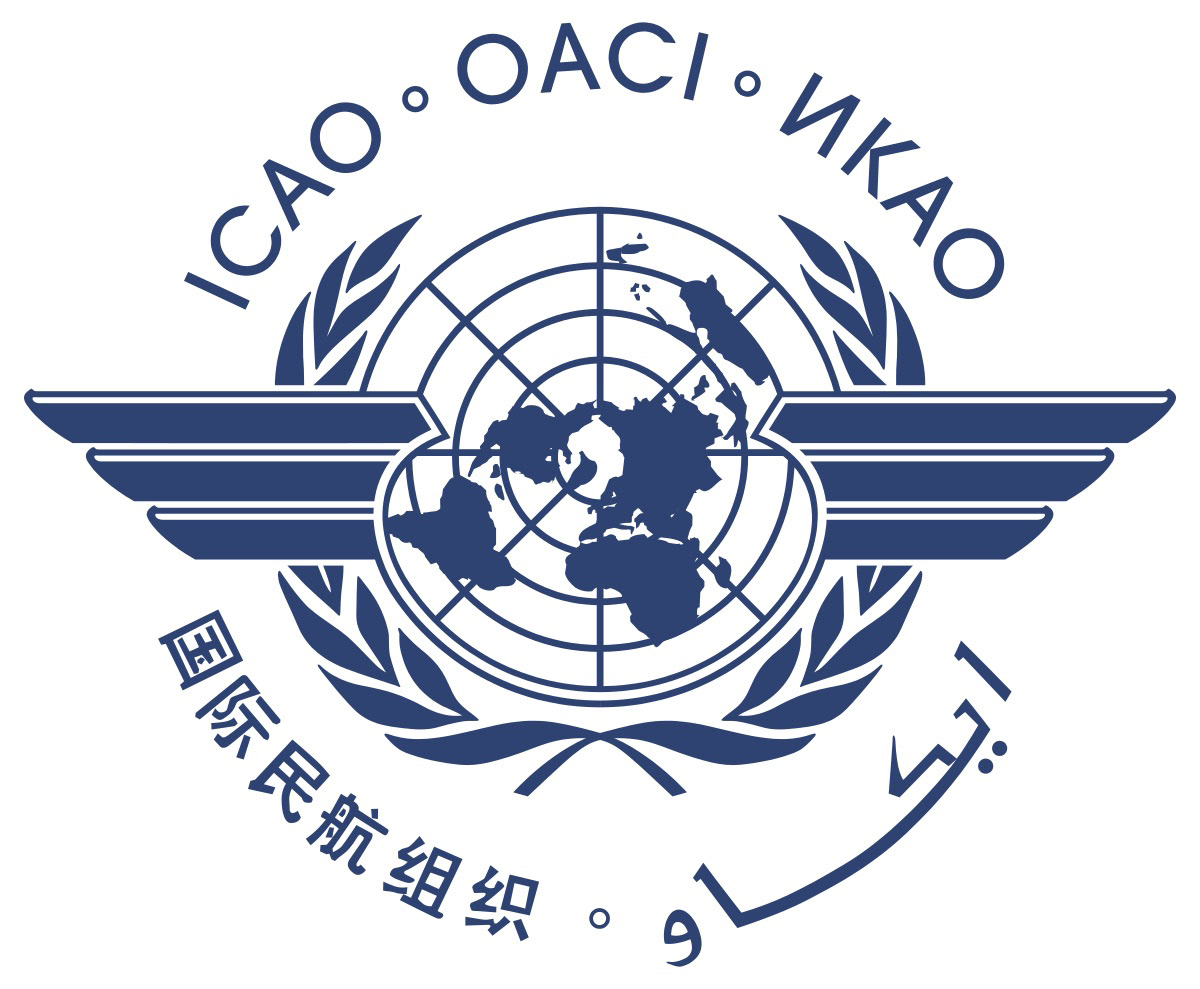


Key Takeaways:
These protocols from the aviation, cruise ship, and hospital sectors highlight a robust emphasis on preparedness, coordination, and continuous training to ensure safety and efficient emergency response. They serve as benchmarks for developing comprehensive emergency preparedness plans across industries.
🗒️ Personalized Safety Plans: Like muster drills on cruise ships, offer personalized emergency plans for families, tailored to their specific needs and circumstances.
🩹 Resource Accessibility: Ensure that users can easily access information about essential supplies, akin to hospitals' preparations for essential medicines and equipment.
🚨 Training and Drills: Include interactive features/resources that allow families to conduct emergency drills, similar to training exercises in aviation and cruise ship protocols.
CHALLENGES OF EMERGENCY READINESS
Kayla watches with concern as reports of the Maui wildfires unfold on the evening news.
As the weeks go by, Kayla becomes compelled to start a family emergency plan, yet struggles on where to begin. She tackles this by scouring through online resources to craft an initial plan.
Kayla finds that creating a family emergency plan overwhelming due to the excess amount of information and resources available online.
Kayla begins to develop an emergency checklist, listing out essential items for survival, such as flashlights, first aid supplies, canned goods, etc. She quickly realizes how time-consuming and exhausting emergency planning is truly made out to be.
Kayla yearns for simplicity - Amid the complexity, a desire for a streamlined approach to family emergency readiness takes hold. Frustration mounts as she searches on her smartphone for a comprehensive emergency planning app, but her attempts come up empty.
User Interviews
4 Participants, Ages 30-62, 1 Week
I conducted in-depth interviews with heads of households, each with two or more family members and experience in actual responses to emergency and natural disaster situations. This approach provided a wide range of insights into family attitudes and needs regarding emergency preparedness.




USER ECHOES
"Being prepared is a lifestyle. It's not just having a year's worth of food sitting in the pantry. It's a mindset."
Jade (62), Emergency Alerts
"Communication is important, especially alerts from the federal government about road blockages, highway shutdowns, and electrical issues, informing us about which roads are closed and what steps to take next."
Leilani (34), Reliance of Technology
"I sometimes worry about becoming too reliant on technology, especially considering the remote nature of our island and the possibility of system failures."
Trina (29), Desire for Intuitive Solution
"I don’t have any experience with emergency apps, but anything that can help us be better prepared would be appreciated. With our busy lives, an app that intuitively and quickly helps with planning would be super helpful."
Ethan (40), Continuous Preparedness
"Being prepared is a lifestyle. It's not just having a year's worth of food sitting in the pantry. It's a mindset."
CORE DISCOVERIES
🤔 Perception of Emergency Preparedness:
Many families perceive emergency preparedness as overwhelming and often postpone it. While recognizing its importance, there's a notable lack of active involvement in preparedness activities.
🏃♂️ Physical and Mental Readiness:
I discovered that while physical readiness, like having an emergency kit, was often emphasized, mental, emotional, and spiritual readiness were equally critical. Families expressed a need for guidance on how to mentally prepare for emergencies and how to maintain calm and resilience in such situations.
🛠️ Lifestyle Change and Family Involvement:
A significant insight from the interviews was the realization that preparedness should be viewed as a lifestyle choice, deeply embedded within the daily routines of families and communities.
HUDDLE'S EVOLUTION
Original Concept
My initial vision for the app was to simplify emergency preparedness into a user-friendly tool featuring checklists, emergency contacts, and plans, streamlining the vast resources available. However, insights from user interviews and research indicated that a truly effective approach requires integrating family awareness and lifestyle adaptations for sustained readiness, rather than just consolidating emergency planning tools.
New Concept
Adapting to this insight, the app's goal evolved to promote a lifestyle of continuous emergency preparedness. It now focuses on fostering resilient habits and mindsets in families, going beyond basic emergency resources to instill a culture of proactive readiness.
HUDDLE DESIGN GOALS
⚡️ Usability and Accessibility
Designed for ease, the app caters to all ages with simple navigation, clear instructions, and visual aids for various tech levels.
📝 Personalization
Features customizable profiles and flexible emergency plans, allowing users to tailor the app to their family's specific needs and situations.
😲 Engagement
Engages families with interactive planning tools and gamification, like a "Preparedness Score," to motivate ongoing readiness efforts.
⛑️ Safety and Preparedness
Focuses on comprehensive planning and regular updates to essential supplies, keeping families' readiness optimal.
🙌🏽 Feedback and Support
Offers real-time feedback via the Preparedness Score and provides improvement tips and encouragement among family members.
TASK NAVIGATION & LOW-FIDELITY WIREFRAMES
1. Family Profile Creation
Users will go through a detailed profile/dashboard that not only captures information about each family member but also gathers specifics about their household and living situation. This comprehensive profiling enables more personalized and effective emergency planning.
2. Emergency Plan and Increasing Preparedness Score
Here the user will land into their dashboard, where they will be able to access the main sections of the app, including the focal point of this flow, the family's' emergency plan. Based off of details provided during the onboarding stage, the app will automatically structure a user- friendly and tailored plan.
3. Ongoing Maintenance
I envision this feature as a way to ensure families stay proactive in maintaining their emergency readiness. It focuses on the regular upkeep of emergency equipment, supplies, and the practice of emergency drills.
THE HUDDLE BRAND
"Huddle," encapsulates the core ideas of family unity, teamwork, and strategic planning in facing emergencies. Drawing inspiration from the sports world, where a huddle represents a team coming together to strategize and support each other, the app aims to bring families together in a similar manner. It promotes ongoing, collaborative readiness, ensuring families continuously plan, prepare, and protect together.
For Huddle's primary colors, I chose deep green (#00473E) symbolizing strength and protection, and vibrant yellow (#FAAE2B) for alertness and optimism. While emergency services often use red, these colors better reflect HUDDLE's family-focused values, offering a balanced, less jarring visual experience.
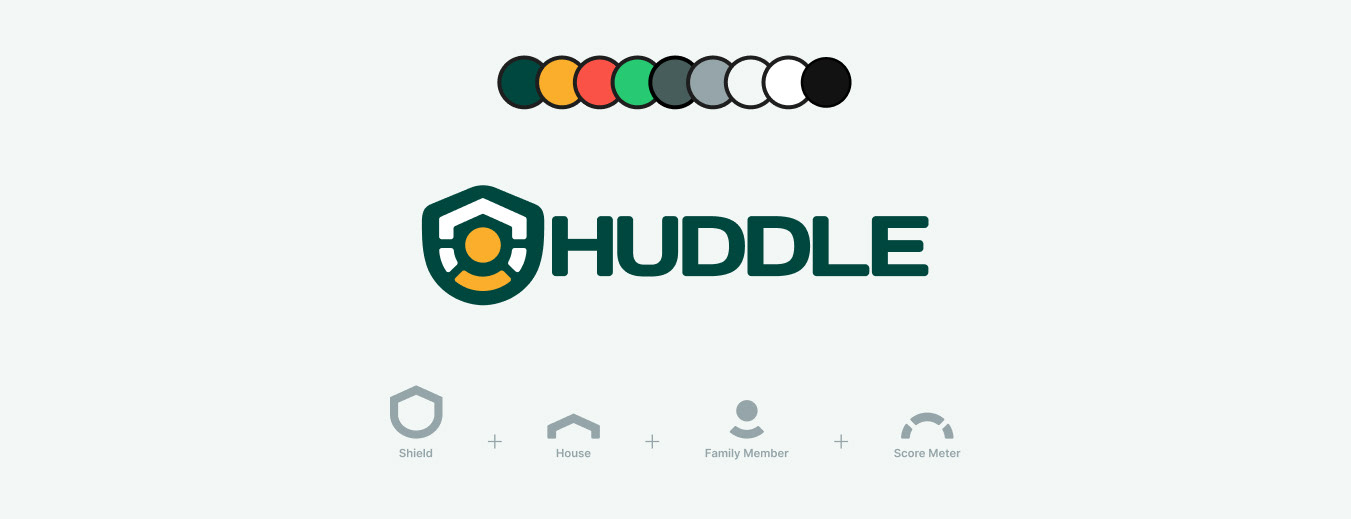

Huddle UI KIT


HIGH-FIDELITY SCREENS
INTERACTIVE HUDDLE PROTOTYPE
Prototype Duration: 1:55
USER TESTING
5 participants, 1 week
Usability test interviews revealed that the prototype was generally well-received, with no common issues emerging. However, specific severe concerns were identified, particularly regarding the clarity and security of personal data sharing. This feedback was crucial for refining the app to better meet user expectations and ensure data protection.
FINAL HUDDLE PROTOTYPE
To address privacy concerns and enhance usability, I implemented several key revisions. These changes, aimed at improving user trust and app functionality.
🔒 Privacy Adjustment
Switched from specific names to family roles (e.g., Dad, Mom, Grandma) to limit personal data collection.
🔍 Transparency Feature
Added an info icon explaining the necessity of collecting certain information (e.g., Location, age).
🧭 User Guidance
Introduced a simple walkthrough guide for the dashboard to improve user navigation and context understanding.
Prototype Duration: 2:55
Reflection and key Learnings
Starting with "Huddle," I initially aimed for a straightforward emergency tool. However, user research was a game-changer. It revealed families needed more than a one-off solution; they wanted something to weave emergency planning into their daily lives, encouraging ongoing readiness. This insight was eye-opening. It shifted my focus towards building an app that didn't just inform but engaged families in cultivating a habit of preparedness. This pivot was crucial. In a real job setting, without diving into research, a company could've wasted time and money into something users didn’t truly need. It’s a clear lesson: understanding users isn’t just beneficial—it’s essential to creating meaningful and effective products.
